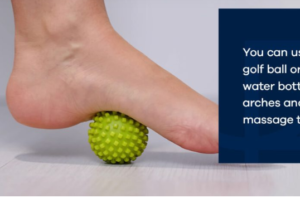How to Treat Plantar Fasciitis
Plantar fasciitis is the most prevalent type of foot discomfort, primarily affecting the heal region and the arch. With a special emphasis on athletes, runners, and people whose jobs require them to be vigorous on foot throughout the day, it has a particularly wide reach. When too much strain is placed on the plantar fascia, which is a thick connective tissue that helps cup the arch of the foot, it causes pain in the heel and inflammation. As such, you seemed to have sustained this injury, and it’s needless to say that you would want to know ways of managing the pain and resolving the problem. This guide presents stepwise approaches towards how children and adults can manage plantar fasciitis effectively and efficiently while providing many options for treatment that will ensure the patient’s well-being.

Characteristics of How to Treat Plantar Fasciitis
1. Rest and Activity Modification
A common recommendation that has dawned to help with the management of plantar fibromatosis is rest and lowering the level of impacts that exacerbates the condition. Activities that seem to put impact to heel, like running or even standing for extended periods of time, ought to be avoided. With sufficient rest, the plantar fascia will have more room and time to recover, and inflammation will cool.
2. Stretching Exercises
Plantar fascial, calf muscles, and Achilles tendon stretches can be performed that help relieve the burden created in the foot. Some popular exercises are:
- Towel Stretch- Utilizing a towel, the subject’s foot is gently pulled towards them, while the subject attempts to keep the leg straight.
- Toe Stretches- The toes are stretched down towards the shin to stretch out the plantar aponeurosis.
- Calf Stretches- Both the calves are stretched to the sides in order to ease the tension on the plantar aponeurosis.
3. Ice Therapy
Ice treatment is very useful in reducing the swelling and pain from the affected tissues. Ice packs can be applied in the passive state for fifteen to twenty minutes, two to three times in a day. One efficient method is to use the frozen water bottle and roll it beneath the foot.
4. Orthotics and Footwear Changes
Apart from custom made orthotics which can be worn in shoes, it is also important to wear a shoe with an appropriate amount of arch and cushioning to prevent excessive pressure problems.
5. Physical Therapy
It can help if a physical therapist can make modifications on how the patient performs certain passive movements (stretching) or active movements (strengthening) involving the foot/ankle complex. These movements serve to efficiently increase the range of motion about the targeted area and redirect unwanted FPF stress.
6. Medications and Anti-inflammatory
Non-prescription medications like ibuprofen or aspirin can help in controlling pain and decreasing inflammation. Sometimes, doctors may administer corticosteroid injections for quick alleviation of severe symptoms.
7. Night Splints
During the night, night splints allow for the positioning of the foot in a dorsiflexed posture, which in turn keeps the plantar fascia taut. As a result, the morning pain that affects individuals suffering from plantar fasciitis is minimized.
Specialty of the Disease Plantar Fasciitis
Treatment for plantar fasciitis is one of the few conditions in the field of rehabilitation when the focus is on relief of pain as well as healing the area. This condition typically lasts for many weeks or even months during which there is emphasis on patience and consistency in treatment. Achieving success involves preventing further trauma or injury, decreasing inflammation, and increasing the range of motion of the foot.
- Holistic Approach: For prompt and lasting relief of symptoms, both the manifestations and root factors of plantar fasciitis need to be treated.
- Customizable Treatments: Depending on the intensity of the condition and the levels of activity, treatments can be customized to suit an individual’s needs.
- Combination of Therapies: This type of recovery is normally achieved via several interrelated activities involving rest, physical therapy, and changes in types of shoes worn.
Uses of How to Treat Plantar Fasciitis
1. Pain Management
The most important aim when it comes to the treatment of plantar fasciitis would be pain control and managing the inflammation in the plantar fascia. This can be accomplished through ice therapy, medication and orthotic devices.
2. Restore The Function Of The Foot
Treatment will encapsulate stretching exercises in conjunction with physical therapy aimed at increasing the flexibility and strength of the foot and the ankle. This facilitates the rehabilitation of ‘normal’ foot function and stops further deterioration.
3. Sustained Resolution
The need for immediate relief is self-evident whereas the treatment plan draws attention to aspects that would engender long term recovery. These include addressing the mechanical predisposition for re-injury, like over pronation, or poor shoe selection.
Main Theme of How to Treat Plantar Fasciitis
The primary focus in plantar fasciitis treatment remains the maintenance which is gentle and does not involve any surgery. As plantar fasciitis can become chronic if untreated, the aim of therapy is to increase physiological healing, reduce pain and swelling. It is equally important to prevent recurring episodes by wearing appropriate shoes, performing routine stretches, and changing activity patterns.
In brief:
- Patience and Persistence: Reassurance that treatment works, but may take time.
- Supportive Care: There is much to be gained by making sure that the feet are well-supported.
- Combination Therapy: Often quite a number of treatment modalities need to be employed to achieve success.
Pros and Cons of How to Treat Plantar Fasciitis
Pros Non-invasive treatments are possible Cons Recovery may be prolonged, up to several months Pros Stretching and exercises are easy to perform at home Cons Certain methods, particularly custom orthotics, tend to be expensive Pros Relief and support are also provided by orthotics for the long term Cons Corticosteroid injections merely mask the problem providing short-term relief only Pros Immediate pain relief is obtainable through ice therapy and rest Cons Treatment is consistent and an effort will be needed Pros Overall foot function shall be improved through physical therapy Cons Some cases, if untreated in the first place, may even need surgical treatment
Conclusion: How to Treat Plantar Fasciitis
In terms of muscular-skeletal rehabilitation, the focus of the plantar fasciitis treatment consists of the gradual introduction of exercises, removal of aggravating factors, the use of appropriate footgear and/or medical treatment aimed at the reduction of inflammation and pain. It is true that the recovery process may be difficult and often slow, but they must appreciate the fact that so long as they remain dedicated to the specific plan, results will eventually emerge. The cornerstone of Successful Management is recognizing and treating all the numerous causes like the use of inappropriate footwear, increased activity, and abnormal foot alignment. When this is done, recurrence is unlikely and a normal life can expect to live without suffering from the problem.
FAQs: How to Treat Plantar Fasciitis
1. How long does it take to treat plantar fasciitis?
The majority of plantar fasciitis cases take several months to resolve with such consistent treatment. In contrast, more severe cases might be delayed and may take longer durations to heal.
2. What are specific exercises that aid in the relief of plantar fasciitis?
Such stretching exercises, for example, calves extensions and towel stretches, relieve the sorefoot of plantar fasciitis. Foot and ankle strengthening exercises are likewise beneficial.
3. Is exercising while suffering plantar fasciitis okay?
Running and other high impact workouts are not advisable, however many low impact options, such as swimming or cycling are quite safe.
4. Is surgery required to fix plantar fasciitis?
Surgical intervention is only warranted in the advanced chronic scenarios when all the other possible non invasive options prove to be ineffective. The majority of the patients heal without surgical intervention.
5. What type of shoes are good to wear when you have plantar fasciitis?
For this purpose shoes with arch support and cushioning should be worn. It helps to select a shoe which has a good stability and shock absorbance feature in order to put less strain on the plantar fascia.
